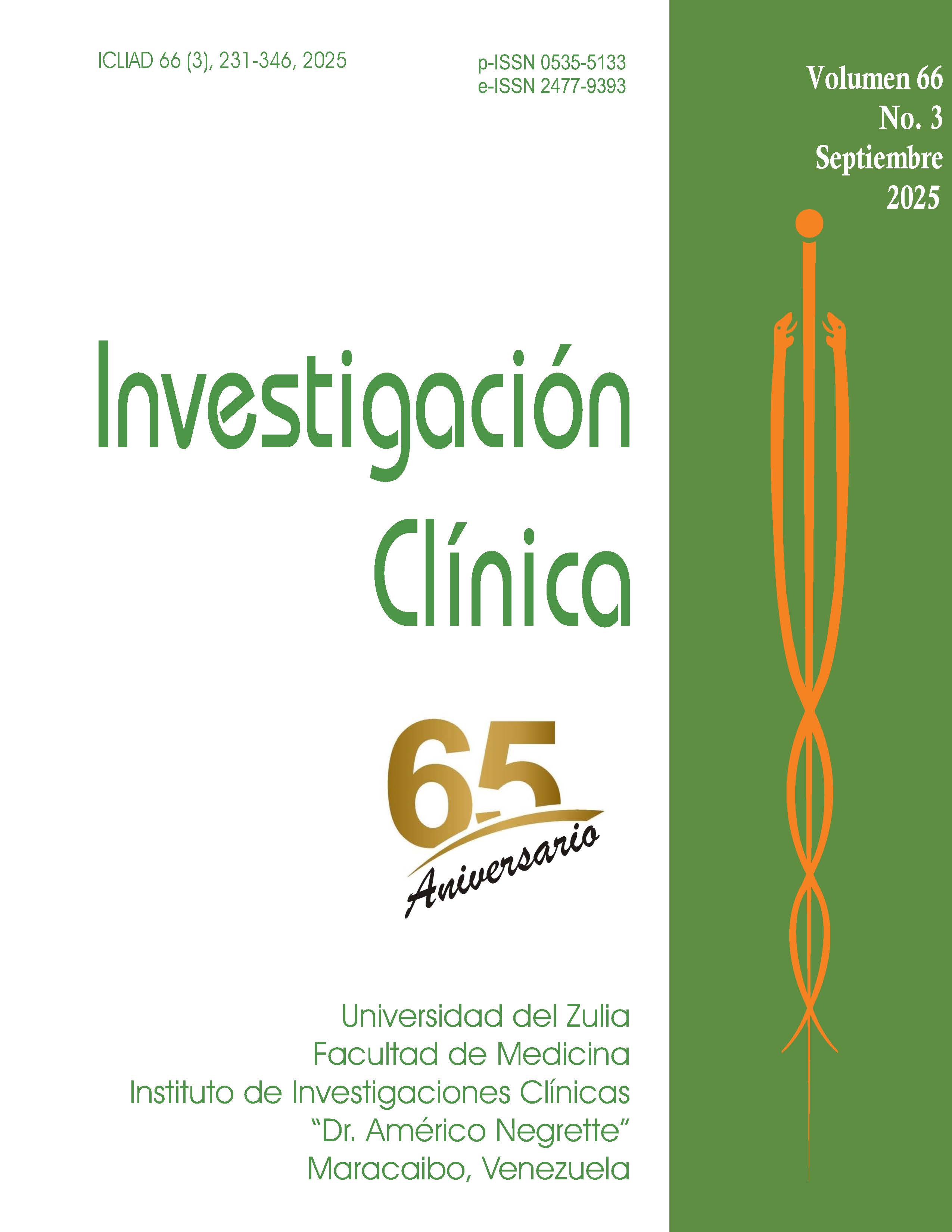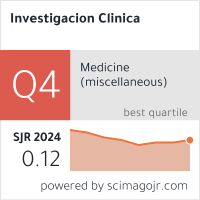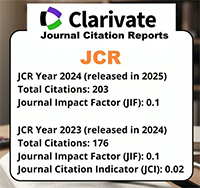MiR-451 ameliorates red blood cell storage damage and macrophage polarizationmediated transfusion immunity by regulating the AMPK/mTOR signalling pathway.
MiR-451 mejora el daño de almacenamiento de glóbulos rojos y la inmunidad de transfusión mediada por la polarización de macrófagos mediante la regulación de la señalización AMPK/mTOR.
Abstract
Red blood cells (RBCs) undergo a series of structural and function- al changes during storage, and miR-451 is crucial for maintaining homeostasis of RBCs. Inflammatory factors and miR-451 expression in whole blood at different storage times were detected by ELISA and qRT-PCR. THP-1 cells were induced into M0 macrophages. Subsequently, miR-451 mimics, miR-451 inhibitor, and activat- ing transcription factor 2 (ATF2) were transfected into the cells, followed by the application of compound C. Macrophages were then polarized to the M1 pheno- type. Macrophage markers were discovered through flow cytometry and Western blot. The adenosine monophosphate-activated protein kinase (AMPK)/mammalian target of rapamycin (mTOR) pathway protein levels were detected using Western blot. Finally, a mouse model of traumatic hemorrhagic shock was constructed, and blood transfusion and tail vein injection of agomir-451 were performed. The levels of M1 macrophage markers and inflammatory factors were detected by flow cytom- etry and ELISA, respectively. When the human whole blood storage time was 21 d and 35 d, the expression of miR-451 decreased, and the proinflammatory factor contents increased. When miR-451 was overexpressed, proinflammatory cytokines and M1 macrophage markers’ expression in THP-1 cells were reduced, p-AMPK level was increased, and p-mTOR level was decreased. After overexpression of ATF2 or compound C, proinflammatory factors and M1 macrophage markers in THP-1 cells increased, and p-AMPK and p-mTOR expression reversed. Overexpression of miR- 451 also inhibited macrophage M1 polarization and inflammation in shock mice. miR-451 inhibits ATF2-regulated AMPK/mTOR pathway, inhibits macrophage M1 polarization and inflammation, and improves RBC storage damage.
Downloads
References
D’Alessandro A, Kriebardis AG, Rinalducci S, Antonelou MH, Hansen KC, Papassideri IS, Zolla L. An update on red blood cell storage lesions, as gleaned through biochemistry and omics technologies. Transfusion 2015;55(1):205-219. https://doi.org/10.1111/trf.12804.
Riley BC, Stansbury LG, Hasan RA, Hess JR. Transfusion of red blood cells ≥35 days old: A narrative review of clinical outcomes. Transfusion 2023;63(11):2179-2187. https://doi.org/10.1111/trf.17536.
Zuckerman J, Coburn N, Callum J, Mahar AL, Acuña SA, Guttman MP, et al. Association of perioperative red blood cell transfusions with all-cause and cancer-specific death in patients undergoing surgery for gastrointestinal cancer: Long-term outcomes from a population-based cohort. Surgery 2021;170(3):870-879. https://doi.org/10.1016/j.surg.2021.02.003.
Mangalmurti NS, Xiong Z, Hulver M, Ranganathan M, Liu XH, Oriss T,et al. Loss of red cell chemokine scavenging promotes transfusion-related lung inflammation. Blood 2009;113(5):1158-1166. https://doi.org/10.1182/blood-2008-07-166264.
Straat M, Böing AN, Tuip-De Boer A, Nieuwland R, Juffermans NP. Extracellular Vesicles from Red Blood Cell Products Induce a Strong Proinflammatory Host Response, Dependent on Both Numbers and Storage Duration. Transfus Med He mother 2016;43(4):302-305. https://doi.org/10.1159/000442681.
Nogueira D, Rocha S, Abreu E, Costa E, Santos-Silva A. Biochemical and cellular changes in leukocyte-depleted red blood cells stored for transfusion. Transfus Med Hemother 2015;42(1):46-51. https://doi.org/10.1159/000370140.
Wang F, Ling L, Yu D. MicroRNAs in β-thalassemia. Am J Med Sci 2021;362(1):5- 12. https://doi.org/10.1016/j.amjms.2021.02.011.
Kannan M, Atreya C. Differential profiling of human red blood cells during storage for 52 selected microRNAs. Transfusion 2010;50(7):1581-1588. https://doi.org/10.1111/j.1537-2995.2010.02585.x.
Guo JU, Agarwal V, Guo H, Bartel DP. Expanded identification and characterization of mammalian circular RNAs. Genome Biol 2014;15(7):409. https://doi.org/10.1186/s13059-014-0409-z.
Listowski MA, Heger E, Bogusławska DM, Machnicka B, Kuliczkowski K, Leluk J, Sikorski AF. microRNAs: fine tuning of erythropoiesis. Cell Mol Biol Lett 2013;18(1):34-46. https://doi.org/10.2478/s11658-012-0038-z.
Fang X, Shen F, Lechauve C, Xu P, Zhao G, Itkow J, et al. miR-144/451 represses the LKB1/AMPK/mTOR pathway to promote red cell precursor survival during recovery from acute anemia. Haematologica 2018;103(3):406-416. https://doi.org/10.3324/haematol.2017.177394.
Huang H, Zhu J, Fan L, Lin Q, Fu D, Wei B, Wei S. MicroRNA Profiling of Exosomes Derived from Red Blood Cell Units: Implications in Transfusion-Related Immunomodulation. Biomed Res Int 2019. https://doi.org/10.1155/2019/2045915.
Zhao K, Wang L, Li T, Zhu M, Zhang C, Chen L, et al. The role of miR-451 in the switching between proliferation and migration in malignant glioma cells: AMPK signaling, mTOR modulation and Rac1 activation required. Int J Oncol 2017;50(6):1989-1899. https://doi.org/10.3892/ijo.2017.3973.
Peng Z, Luo R, Xie T, Zhang W, Liu H, Wang W, et al. Erythrocyte Adenosine A2B Receptor-Mediated AMPK Activation: A Missing Component Counteracting CKD by Promoting Oxygen Delivery. J Am Soc Nephrol 2019;30(8):1413-1424. https://doi.org/10.1681/ASN.2018080862.
Longo V, Marrocco C, Zolla L, Rinalducci S. Label-free quantitation of phosphopeptide changes in erythrocyte membranes: towards molecular mechanisms underlying deformability alterations in stored red blood cells. Haematologica 2014;99(7):e122-125. https://doi.org/10.3324/haematol.2013.103333.
Simcox J, Lamming DW. The central moTOR of metabolism. Dev Cell 2022;57(6):691-706. https://doi.org/10.1016/j.devcel.2022.02.024.
D’Alessandro A, Xia Y. Erythrocyte adaptive metabolic reprogramming under physiological and pathological hypoxia. Curr Opin Hematol 2020;27(3):155-162. https://doi.org/10.1097/MOH.0000000000000574.
Karafin MS, Francis RO. Impact of G6PD status on red cell storage and transfusion outcomes. Blood Transfus 2019;17(4):289- 295. https://doi.org/10.2450/2019.0092-19.
Silic-Benussi M, Sharova E, Ciccarese F, Cavallari I, Raimondi V, Urso L, et al. mTOR inhibition downregulates glucose-6-phosphate dehydrogenase and induces ROS-dependent death in T-cell acute lymphoblastic leukemia cells. Redox Biol 2022;51:102268. https://doi.org/10.1016/j.redox.2022.102268.
Nemkov T, Stefanoni D, Bordbar A, Issaian A, Palsson BO, Dumont LJ, et al. Blood donor exposome and impact of common drugs on red blood cell metabolism. JCI Insight 2021;6(3): e146175. https://doi.org/10.1172/jci.insight.146175.
Zhang Y, Xiang J, Sheng X, Zhu N, Deng S, Chen J,et al. GM-CSF enhanced the effect of CHOP and R-CHOP on inhibiting diffuse large B-cell lymphoma progression via influencing the macrophage polarization. Cancer Cell Int 2021;21(1):141. https://doi.org/10.1186/s12935-021-01838-7.
Deswal B, Bagchi U, Santra MK, Garg M, Kapoor S. Inhibition of STAT3 by 2-Methoxyestradiol suppresses M2 polarization and protumoral functions of macrophages in breast cancer. BMC Cancer 2024;24(1):1129. https://doi.org/10.1186/s12885-024-12871-w.
Li ZZ, Wang XX, Ma L, Wang H, Xu JM, Zhou XF, et al. Influence of different erythrocyte storage times on the macrophage response in haemorrhagic shock mice. J Int Med Res 2020;48(8):300060520947872. https://doi.org/10.1177/0300060520947872.
Roussel C, Morel A, Dussiot M, Marin M, Colard M, Fricot-Monsinjon A, et al. Rapid clearance of storage-induced microerythrocytes alters transfusion recovery. Blood 2021;137(17):2285-2298. https://doi.org/10.1182/blood.2020008563.
Sut C, Tariket S, Chou ML, Garraud O, Laradi S, Hamzeh-Cognasse H, et al. Duration of red blood cell storage and inflammatory marker generation. Blood Transfus 2017;15(2):145-152. https://doi.org/10.2450/2017.0343-16.
Obrador R, Musulin S, Hansen B. Red blood cell storage lesion. J Vet Emerg Crit Care (San Antonio) 2015;25(2):187-199. https://doi.org/10.1111/vec.12252.
Chen X, Xie X, Xing Y, Yang X, Yuan Z, Wei Y. MicroRNA Dysregulation Associated with Red Blood Cell Storage. Transfus Med Hemother 2018;45(6):397-402. https://doi.org/10.1159/000489321.
Sarachana T, Kulkarni S, Atreya CD. Evaluation of small noncoding RNAs in ex vivo stored human mature red blood cells: changes in noncoding RNA levels correlate with storage lesion events. Transfusion 2015;55(11):2672-2683. https://doi.org/10.1111/trf.13235.
Mitchell A, Gray W, Rooney K, Mohamed I, Quyyumi A, Roback J, Searles C. Abstract 443: Red Blood Cell Microparticles Mediate Transfer of Functional miR-451 to Endothelial Cells in vitro. Arteriosclerosis, Thrombosis, and Vascular Biology. 2015; 35(Suppl_1). https://doi.org/10.1161/atv b.35.suppl_1.443
Zhang J, Zhang D, Zhao J, Zheng W. MiR-33a-5p in stored red blood cells regulates genes of innate immune response and promotes inflammation. Aging (Albany NY) 2024;16(12):10239-10251. https://doi.org/10.18632/aging.205925.
McFaul SJ, Corley JB, Mester CW, Nath J. Packed blood cells stored in AS-5 become proinflammatory during storage. Transfusion 2009;49(7):1451-1460. https://doi.org/10.1111/j.1537-2995.2009.02158.x.
Lennon CS, Cao H, Hall AM, Vickers MA, Barker RN. The red blood cell as a novel regulator of human B-cell activation. Immunology 2021;163(4):436-447. https://doi.org/10.1111/imm.13327.
Pradhan P, Vijayan V, Gueler F, Immenschuh S. Interplay of Heme with Macrophages in Homeostasis and Inflammation. Int J Mol Sci. 2020;21(3):740. https://doi.org/10.3390/ijms21030740
Antonelou MH, Seghatchian J. Insights into red blood cell storage lesion: Toward a new appreciation. Transfus Apher Sci 2016;55(3):292-301. https://doi.org/10.1016/j.transci.2016.10.019.
Wang F, Liu YH, Zhang T, Gao J, Xu Y, Xie GY, et al. Aging-associated changes in CD47 arrangement and interaction with thrombospondin-1 on red blood cells visualized by super-resolution imaging. Aging Cell 2020;19(10):e13224. https://doi.org/10.1111/acel.13224.
Locati M, Curtale G, Mantovani A. Diversity, Mechanisms, and Significance of Macrophage Plasticity. Annu Rev Pathol 2020;15:123-147. https://doi.org/10.1146/annurev-pathmechdis-012418-012718.
An Y, Yang Q. MiR-21 modulates the polarization of macrophages and increases the effects of M2 macrophages on promoting the chemoresistance of ovarian cancer. Life Sci 2020;242:117162. https://doi.org/10.1016/j.lfs.2019.117162.
Liu Q, Yang C, Wang S, Shi D, Wei C, Song J, et al. Wnt5a-induced M2 polarization of tumor-associated macrophages via IL -10 promotes colorectal cancer progression. Cell Commun Signal 2020; 18 (1):51.https://doi.org/10.1186/s12964-020-00557-2.
Chen L, Gao B, Zhang Y, Lu H, Li X, Pan L, et al. PAR2 promotes M1 macrophage polarization and inflammation via FOXO1 pathway. J Cell Biochem 2019;120(6):9799-9809. https://doi.org/10.1002/jcb.28260.
Salvagno GL, Sanchis-Gomar F, Picanza A, Lippi G. Red blood cell distribution width: A simple parameter with multiple clinical applications. Crit Rev Clin Lab Sci 2015;52(2):86-105. https://doi.org/10.3109/10408363.2014.992064.
Baig MS, Liu D, Muthu K, Roy A, Saqib U, Naim A, et al.Heterotrimeric complex of p38 MAPK, PKCδ, and TIRAP is required for AP1 mediated inflammatory response. Int Immunopharmacol 2017;48:211-218. https://doi.org/10.1016/j.intimp.2017. 04.028.
Sánchez-Vera I, Saura-Esteller J, Núñez- Vázquez S, Cosialls AM, Ghashghaei O, Lavilla R, et al. The prohibitin-binding compound fluorizoline induces the proinflammatory cytokines interleukin-8 and interleukin-6 through the activation of JNK and p38 MAP kinases. Biochem Pharmacol 2023;218:115860. https://doi.org/10.1016/j.bcp.2023.115860.
Zhang L, Park JY, Zhao D, Kwon HC, Yang HO. Neuroprotective Effect of Astersaponin I against Parkinson’s Disease through Autophagy Induction. Biomol Ther (Seoul) 2021;29(6):615-629. https://doi.org/10.4062/biomolther.2021.004.
Xiong XQ, Geng Z, Zhou B, Zhang F, Han Y, Zhou YB, et al. FNDC5 attenuates adipose tissue inflammation and insulin resistance via AMPK-mediated macrophage polarization in obesity. Metabolism 2018;83:31-41. https://doi.org/10.1016/j.metabol.2018.01.013.
Xu X, Gao W, Li L, Hao J, Yang B, Wang T, et al.Annexin A1 protects against cerebral ischemia-reperfusion injury by modulating microglia/macrophage polarization via FPR2/ALX-dependent AMPK-mTOR pathway. J Neuroinflammation 2021;18 (1):119. https://doi.org/10.1186/s12974-021-02174-3
Suto T, Karonitsch T. The immunobiology of mTOR in autoimmunity. J Autoimmun 2020;110:102373. https://doi. org/10.1016/j.jaut.2019.102373.
Festuccia WT. Regulation of Adipocyte and Macrophage Functions by mTORC1 and 2 in Metabolic Diseases. Mol Nutr Food Res 2021;65(1):e1900768. https://doi.org/10.1002/mnfr.201900768.
Chen X, Tang J, Shuai W, Meng J, Feng J, Han Z. Macrophage polarization and its role in the pathogenesis of acute lung injury/acute respiratory distress syndrome. Inflamm Res 2020;69(9):883-895. https://doi.org/10.1007/s00011-020- 01378-2.
Xie R, Yang Y, Zhu Y, Gao L, Jiang X, Sun J, et al. Microparticles in red cell concentrates prime polymorphonuclear neutrophils and cause acute lung injury in a two-event mouse model. Int Immunopharmacol 2018;55:98-104. https://doi.org/10.1016/j.intimp.2017.11.029.
Yoshida T, Prudent M, D’Alessandro A. Red blood cell storage lesion: causes and potential clinical consequences. Blood Transfus 2019;17(1):27-52. https://doi.org/10.2450/2019.0217-18.
Zimring JC. Established and theoretical factors to consider in assessing the red cell storage lesion. Blood 2015;125(14):2185- 2190. https://doi.org/10.1182/blood-2014-11-567750.





















